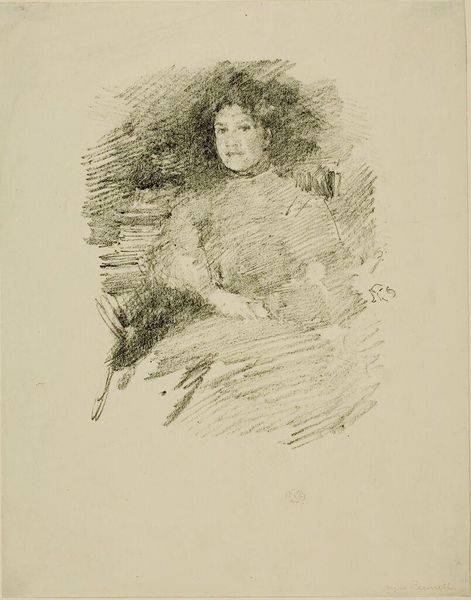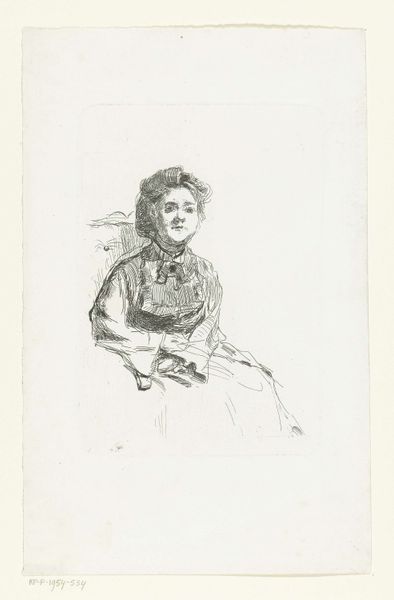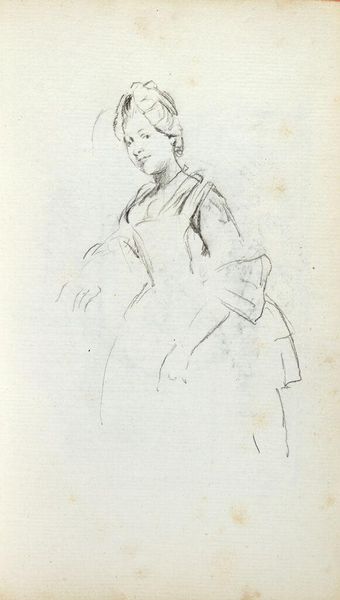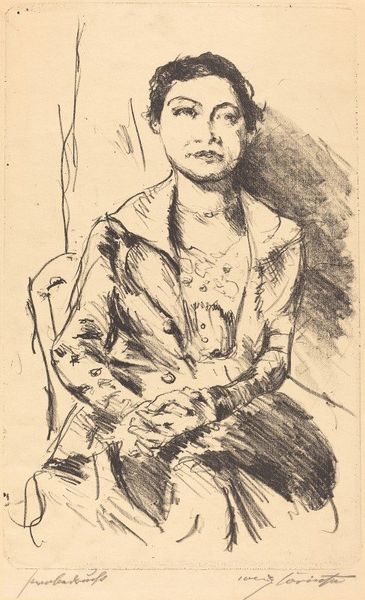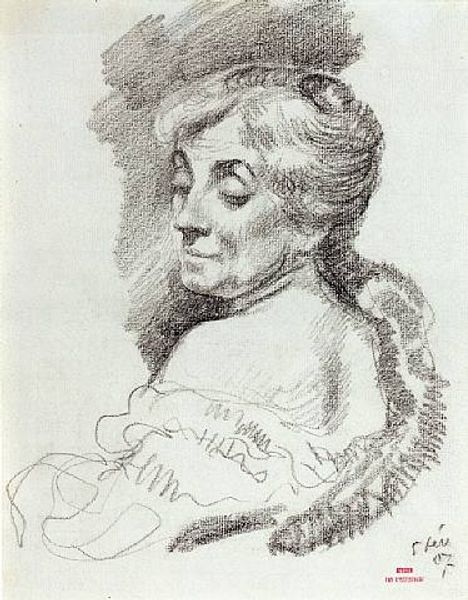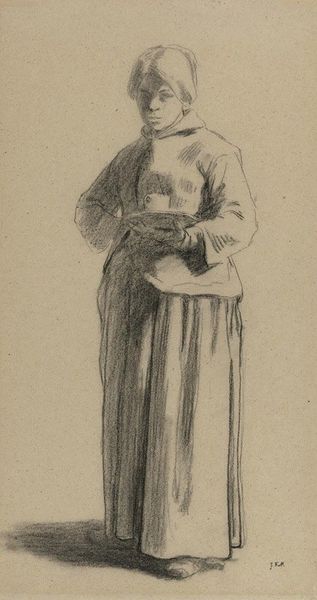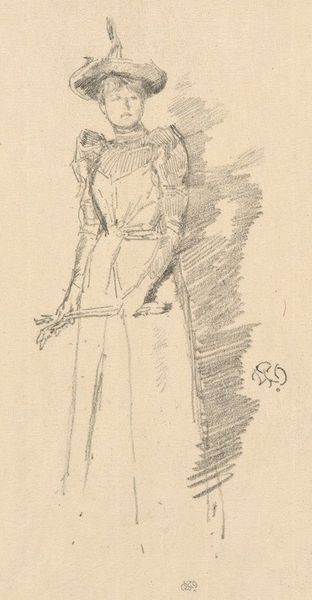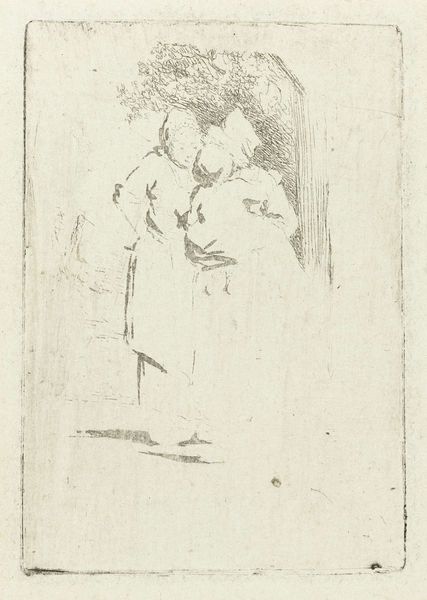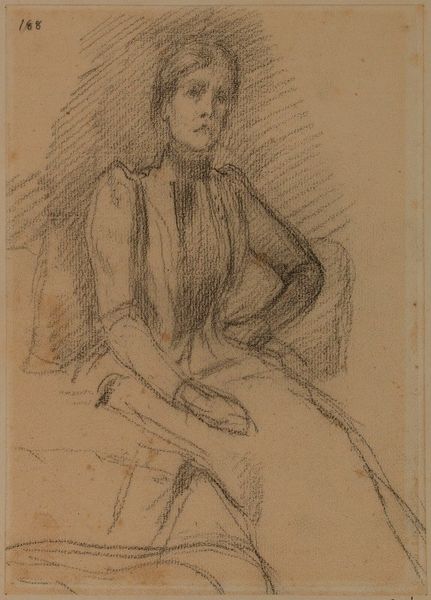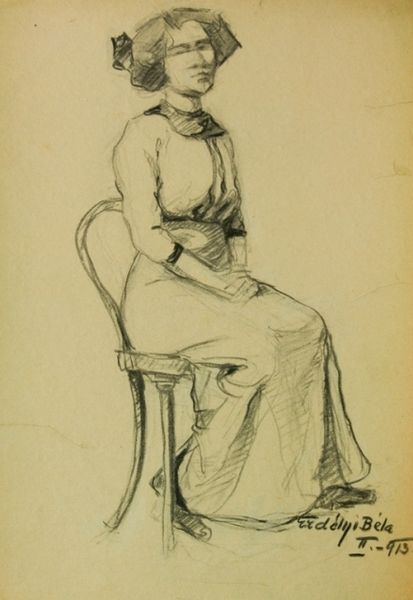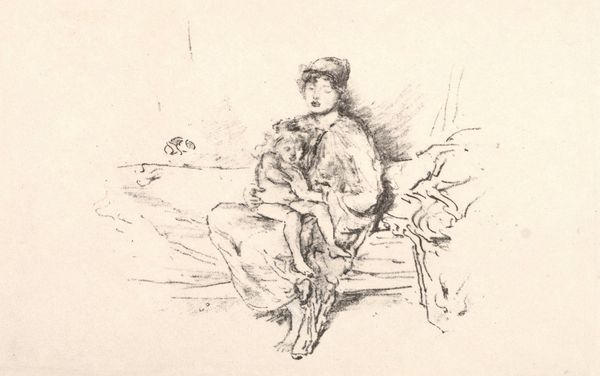
Copyright: Public Domain: Artvee
James McNeill Whistler made this drawing, Firelight, with graphite on paper. He was an American artist living in Europe, deeply involved in debates about art for art’s sake during the late 19th century. Whistler thought that art shouldn’t be harnessed to tell stories or convey moral messages. Instead, it should be about the arrangement of forms and colors in harmonious ways. Here, the sweeping strokes evoke the feeling of a dimly lit interior, perhaps illuminated by a fireplace. The woman’s face is softly modeled, with a calm, contemplative expression. The sketch-like quality suggests a fleeting moment, captured with a sense of immediacy. Whistler's belief in art's autonomy challenged the prevailing academic norms, which emphasized historical and narrative painting. By focusing on formal qualities and subjective experience, he helped pave the way for modern art. To appreciate Whistler's role, you might explore the writings of critics like Théophile Gautier and Charles Baudelaire, who championed the idea of art for art’s sake. You might also look at the institutional history of the Royal Academy in London, which Whistler famously clashed with. His work reminds us that the meaning of art is always shaped by its social and institutional context.
Comments
No comments
Be the first to comment and join the conversation on the ultimate creative platform.
